by Wallace Wyss
Corvettes, for the most part, were bodied in the U.S., of fiberglass. Now those Euro-snobs would like us to believe that if an Italian designer designs a body for a car, even if it’s a made-in-the-USA chassis, that it is gonna be a design to die for.
Not so.
Sometimes Casey strikes out at bat. Now I don’t know who to blame for this monstrosity, Giovanni Michelotti or maybe Pietro Frua. And the coachbuilder of at least one of them was Ghia-Aigle, in Switzerland, an offshoot of Ghia in Italy.
I have seen pictures of the car in two different colors, white and light blue. In one picture it is two tone, and that version has tailfins that are not unlike a Chrysler car of the mid-’50s. So it doesn’t quite resemble the light blue or silver car which looks Maserati-ish from the rear. At any rate a Ghia-Aigle Corvette was in the Auto Revue catalog of 1958 and may have been at the Geneva Salon in ’67.
Inside the dashboard of at least one has wood, which is very Euro, and on the outside Borrani wire wheels were fitted which makes you wonder if they switched to center lock axles.
In the interior both the steering wheel and dashboard, were partly of wood, rather Italian and on the outside the Italian contribution was underlined by the Borrani wheels.
The coachwork was in alloy.
Now I came across a white Ghia-Aigle Corvette at the RM auction in Monterey back in 2002. I don’t think it had a sign so anybody going to the auction might assume it was customized by Joe Blow of Idaho. Ordinarily an Italian-bodied Corvette goes for big bucks (but that one went for $63,000). But this car was “unsung” in Corvette literature, and I think deserved to be so. It looks like the designer was saying to himself “I know what Americans like—they like tailfins, they like two-tone, yadda-yadda ” (hey, throw in some sponge rubber dice, why don’tcha..) and was throwing in every cliché in the book instead of just going with the Euro look.
One puzzler is that, though I saw it at the auction in Monterey a few years ago, a Michelotti Corvette was reported discovered in Portugal, where it had been stored with only 3,800 km (about 2,350 miles) on it’s odometer so I don’t know if this is that same car, and later went to Portugal or if it was discovered before it came to Monterey.
On the Corvette Forum website, in a letter posted in 2001 it said Hyman Ltd., a U.S. dealer, was advertising it and they were the ones saying it was found in Portugal. They wanted $169,500 for their man must have left the auction with a sour grapes look when it hammered down $100K short.
At any rate, once I found out it was based on a ’54 (after seeing a picture with the bonnet open, it’s definitely a “Blue Flame” six) I am even less interested.
So, tho I am a Euro-snob at times I ain’t buying that everything an Italian touches is subsequently anointed with gold.
So don’t give me that “it’s worth more because it was designed in Italy” bull, sometimes even the Italians have a bad day…
Color studio shot prints of solid color car from – click here.
————————————————–
THE AUTHOR: Wallace Wyss says his fourth “Incredible Barn Finds” book will be coming from Enthusiast Books in the spring.
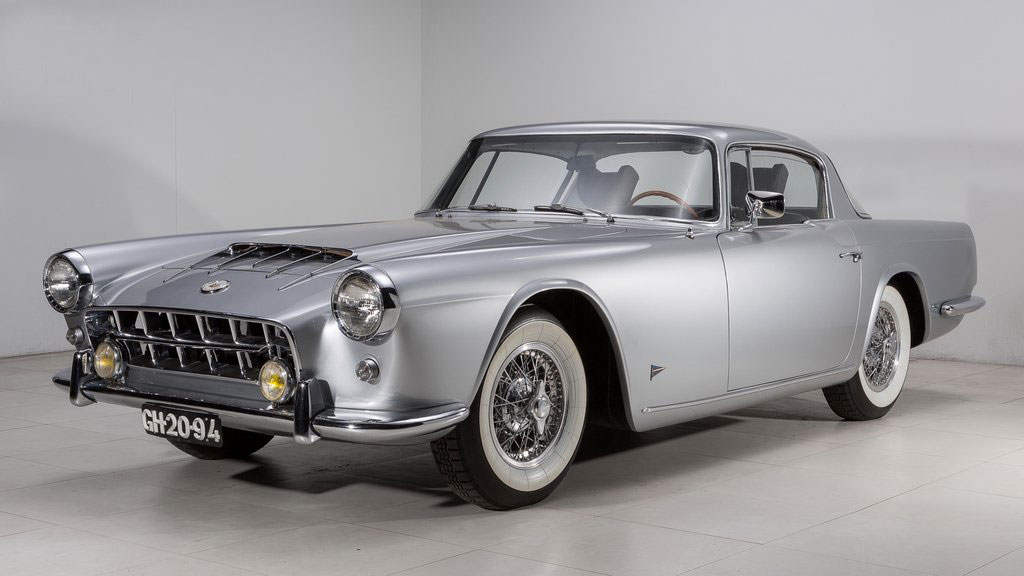
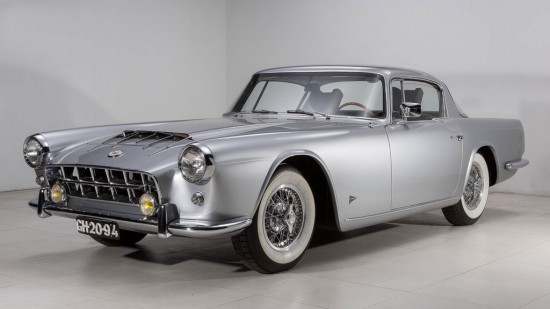
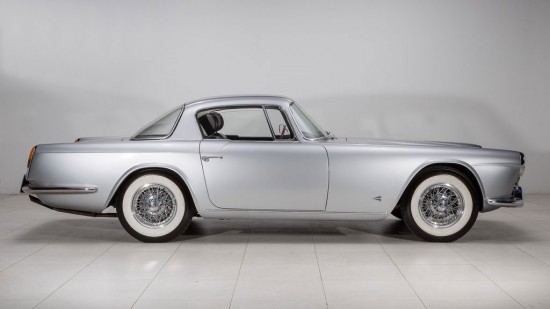
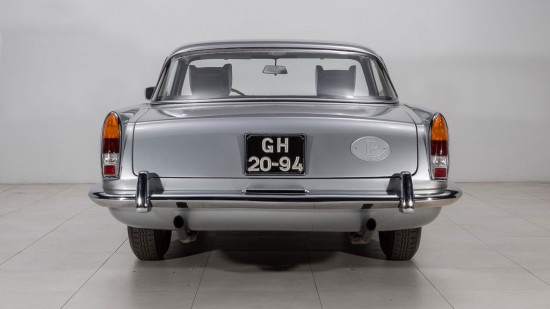
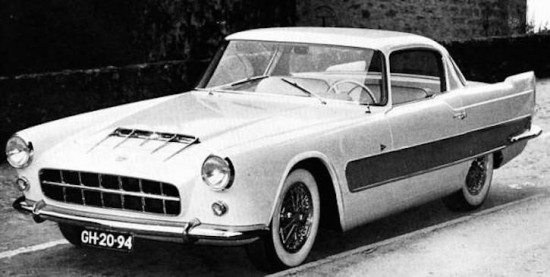
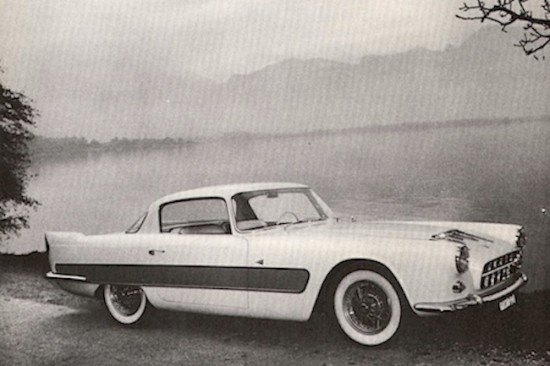


Just so I get it right, you are referring to the white tailfin car as a “monstrosity”, correct? I personally find the silver ’54 Chevrolet Corvette Ghia Aigle Coupe pictured at top unique and aesthetically pleasing – especially in profile.
I agree with Jim Palam about the silver car. Just beautiful.
The silver car is not bad looking at all. Probably not as good looking as the vette it started life as, but nice. It’s two-tone, tail-finned sister looks like a Desoto concept that should have gone straight to the car crusher.
I agree with Jim. I think, some minor redesign of the gridwork in the grille and scoop would enhance the looks. If you called it a Chrysler Le Baron, it would pass with flying colors.
I agree with the posters above. The first car has a pleasant mid-50s Pininfarina character, save for the overwrought hood scoop.
Awright,already. I concede. The white one is the Ugly twin.
The silver one is vaguely Maserati-ish.
The one I saw in Monterey was white.But is the silver one the white 0one re-done?
I know a bit of the story of this car as there was a complete article on the Portuguese classic car Magazine back in 2002.
The original owner, son of a rich Portuguese industrial, bought a corvette in 1954, but due to an accident (some say it was a GM engineer testing the car) the car was damaged and it was very hard at that time to get the original glass fibre body repaired.
Therefore, the owner sent the car to Switzerland to be re-designed and rebodied. There were several issues and delays with the commissioning of the work, and two versions (the tail fin one and then the one with a softer rear end) were produced. Michelotti and Frua were involved in the project, but not together.
The car got a new dash with Ferrari dials and it was converted from the 2 speed auto to a manual gearbox sourced from a Jaguar XK140.
The car was stood and unused for many years until the owner decide to put it up for sale, but never managed to do it and died around 2001. It was white back then.
When it was finally sold, it went straight to the US, and I’m amazed it still has the period Portuguese number plate
The taillights are 1962 Ferrari 250GTE Series III
http://www.id10.co.uk/development/hexagon/wp-content/uploads/2015/05/MG_7979.a-1030×687.jpg